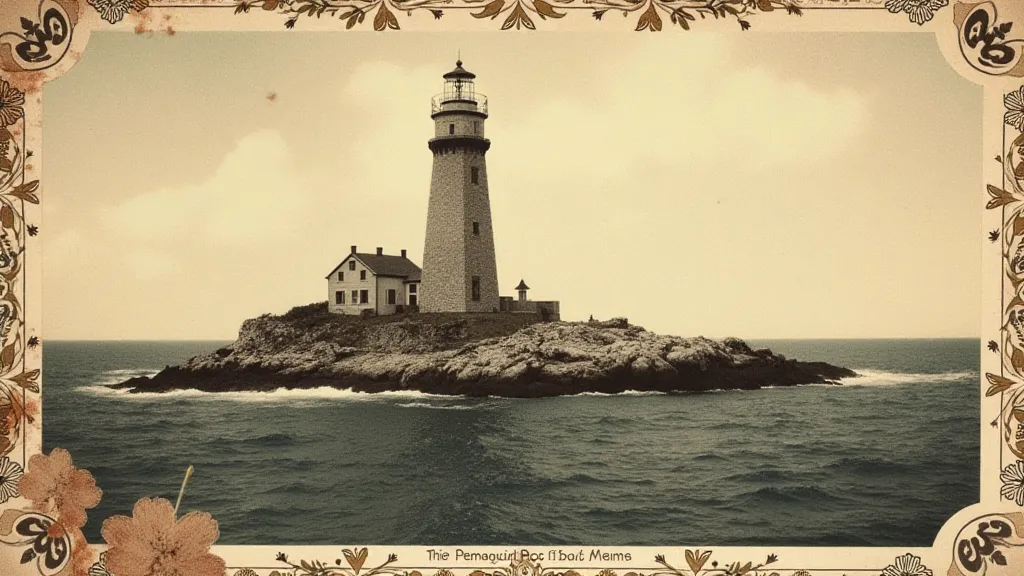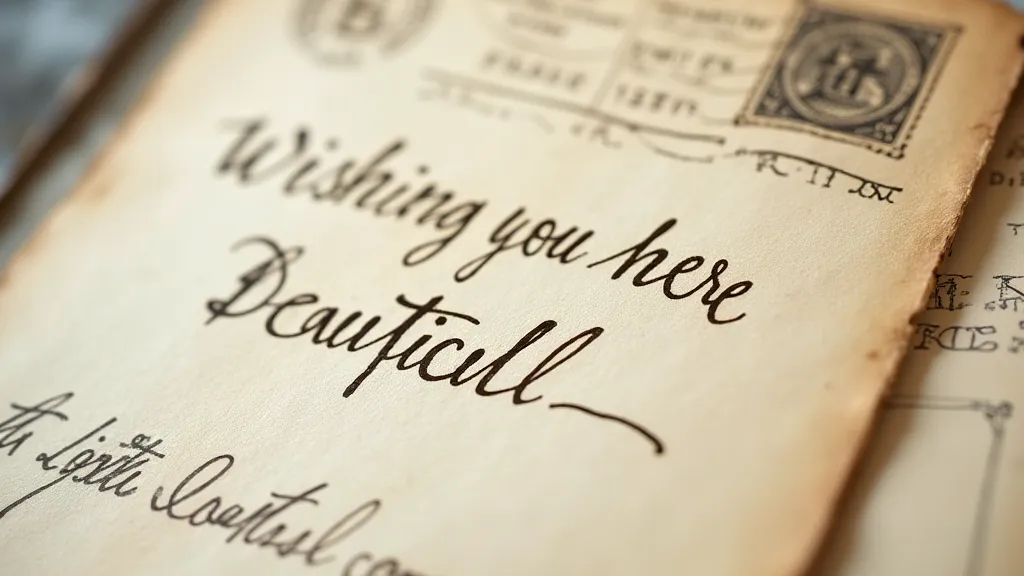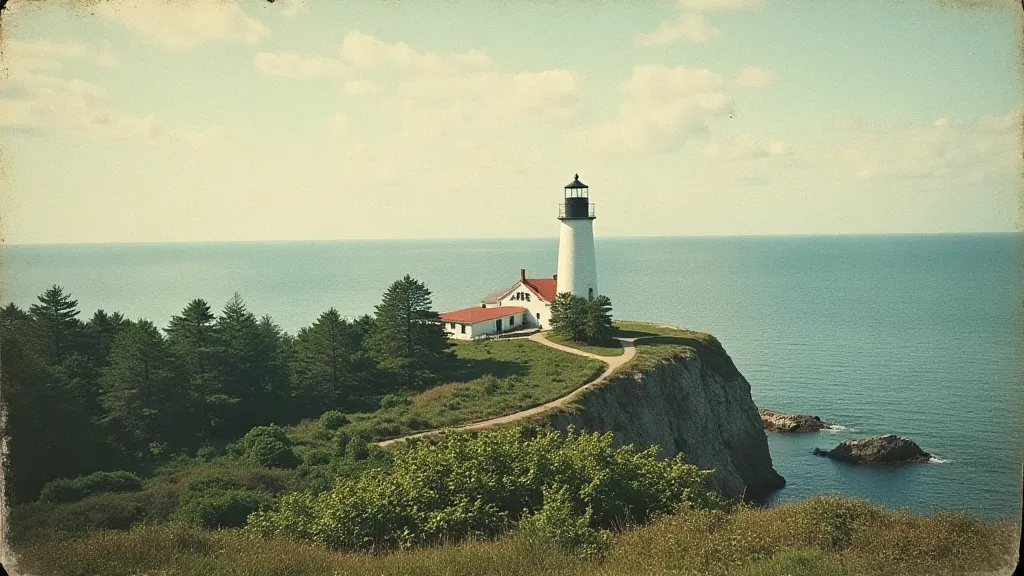The Lighthouse Keeper’s Lament: Postcards, Isolation, and the Human Cost of Progress
Maine. The name conjures images of rocky coastlines, towering pines, and, of course, its iconic lighthouses. For postcard collectors, these beacons of the Atlantic represent more than just scenic beauty; they offer a fleeting glimpse into a past where human ingenuity and resilience met the unforgiving power of the sea. These vintage Maine postcards, often depicting lighthouses bathed in the golden light of a bygone era, tell a story far more intricate than the visual suggests – a story of isolation, dedication, and the slow erosion of a unique way of life.
The late 19th and early 20th centuries witnessed a surge in postcard production. Technological advancements made mass printing accessible, and the low cost made them the perfect medium for connecting with loved ones. Suddenly, a view of Portland Head Light, a glimpse of Pemaquid Point, or the stoic presence of Monhegan Island’s lighthouse could be sent across the country – or even to distant relatives abroad – in a matter of days. These postcards became tangible symbols of connection, sharing snapshots of life in Maine to those far away. But they also subtly documented a changing world. They capture a moment, a feeling, and a connection—often, a bittersweet one, reflecting the growing disconnect between a close-knit community and the rapid modernization taking place. This transition wasn's unique to the coastline; it permeated rural Maine, impacting everything from agriculture to industry. One can find similar narratives captured in postcards depicting Maine’s mill towns, offering a mirror to the industrial developments of the era – The Mill Town’s Reflection: Postcards as a Mirror to Industrial Maine.
Consider the lives of the keepers themselves. Imagine being responsible for the safety of countless vessels, year after year, in often perilous conditions. The work was demanding, the hours long, and the isolation profound. Early lighthouse keepers were often families; husbands, wives, and children all enduring the solitude and the constant vigilance. The postcards they sent – often purchased from visiting supply ships – became their primary link to the outside world, a small, rectangular window offering a glimpse of normalcy amidst the vastness of the ocean. Often the very act of sending a postcard was a conscious effort to maintain a connection, a fragile thread linking them to a world beyond the crashing waves and the relentless cycle of the light. It highlights a growing sense of displacement—a feeling that would resonate across Maine as traditional ways of life gradually faded. Thinking about the nuances in this history makes the simple image on a postcard a portal to a larger story about a vanishing era.

The Rise of Automation and the Fall of an Era
The beauty of a vintage Maine postcard depicting a lighthouse is inextricably linked to the knowledge that these structures – and the lives they supported – were gradually changing. The late 19th century saw the introduction of Fresnel lenses, dramatically improving the range and intensity of the light, and subsequently, the efficiency of lighthouse operation. While an advancement, these innovations unknowingly began the slow obsolescence of the human keepers. The introduction of new technologies wasn't always a straightforward progression towards advancement. Often, it created a sense of disruption and a sense of loss, particularly for those whose livelihoods depended on traditional skills and ways of life.
The early 20th century ushered in the era of automated lighthouse operation. Electric lights, automated fog signals, and eventually, even radio beacons, gradually diminished the need for dedicated keepers. These improvements, intended to enhance safety and efficiency, ironically stripped away a vital component of Maine’s coastal identity: the human element. The families who had lived and breathed the rhythm of the lighthouse – the steady turning of the light, the roar of the foghorn, the constant vigilance – were displaced. Their stories, once integral to the fabric of coastal communities, were slowly fading into the mists of memory. Many of these stories were tied to the intricacies of the postal network – a vital artery connecting isolated communities with the rest of the country. Bound by Thread: The Postal Network and the Shared Experience of a Disappearing Era explores how this network shaped the lives of Mainers and the shared experiences of this transitioning time.
The postcards from this period become poignant reminders of this transition. Often, the image of the lighthouse remains unchanged – a stoic sentinel against the sea – but the perspective subtly shifts. The absence of a keeper's cottage, the absence of figures on the walkway, the overall sense of emptiness, all speak to a world in flux.
Craftsmanship and Collecting: A Window to the Past
Examining these vintage Maine postcards is an exercise in appreciating craftsmanship. The lithographic printing techniques of the era were remarkable, capturing the details of the landscape and the texture of the stone with surprising accuracy. The colors, often muted and softened by age, evoke a sense of timelessness. Look closely, and you’re likely to find tiny imperfections – the slight blurring of a wave, the subtle variation in color – that speak to the human hand involved in the printing process.
For collectors, these postcards represent more than just pretty pictures. They are historical documents, providing insights into the social, economic, and technological developments of the time. The publisher's imprint, often found on the reverse side, can provide clues about the postcard's origin and age. Postmarks, if present, offer a fascinating glimpse into postal routes and the speed of communication in the early 20th century. Condition, of course, plays a significant role in value, but even heavily circulated postcards can hold immense historical significance. The imagery on these postcards wasn’t always a full or accurate representation of what was happening. Sometimes, the narrative was silent, leaving out crucial details about changing landscapes and disappearing traditions, The Postcard's Silence: Gaps in the Narrative of Maine's Early 20th Century.
Restoring a vintage postcard is a delicate process. Aggressive cleaning or retouching can diminish its historical integrity. The goal should be preservation, not perfection. Gentle cleaning with archival-quality materials can remove surface dirt and grime, while careful storage in acid-free sleeves can prevent further deterioration.

The Enduring Legacy
The stories embedded within these vintage Maine postcards are a testament to the resilience of the human spirit and the enduring allure of the sea. They remind us that progress, while often beneficial, can also have unintended consequences. The disappearance of the lighthouse keepers, while a consequence of technological advancement, represents a loss – a loss of connection to the past, a loss of a unique way of life. It’s easy to look at the sweeping changes that occurred during this era with a sense of detached observation. However, for those living through it – the farmers struggling to adapt to new agricultural techniques, the mill workers facing layoffs, the lighthouse keepers watching their way of life disappear – the changes were deeply personal and often painful.
Today, many Maine lighthouses have been restored and opened to the public, offering visitors a chance to experience the beauty and history of these iconic structures. The postcards, however, continue to serve as tangible reminders of the people who dedicated their lives to keeping the lights shining, navigating a course through a world undergoing profound change. The landscape itself was changing too, not just the structures built upon it. Seasonal cycles were shifting, impacting everything from the timing of the harvest to the patterns of wildlife migration. These shifts subtly altered the rhythms of life, adding another layer of complexity to the story captured in these vintage postcards. Those who worked the land were intimately connected to these cycles, and the changes they witnessed were reflected in the quiet observations and subtle details often found on these small paper windows into the past. Moreover, the changing seasons and agricultural practices were frequently captured in postcards illustrating Maine's harvests—The Orchard's Remembrance: Seasonal Cycles and Postcard Vignettes of Maine's Harvests.
Looking at a vintage postcard of Maine’s lighthouses isn’t just admiring a scenic view; it's acknowledging a complex narrative – a narrative of dedication, isolation, and the bittersweet march of progress. It is a story etched in ink and paper, forever preserved in these small, rectangular windows into the past, whispers from the lighthouse keeper's lament.






